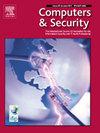Identifying communication sequence anomalies to detect DoS attacks against MQTT
IF 5.4
2区 计算机科学
Q1 COMPUTER SCIENCE, INFORMATION SYSTEMS
引用次数: 0
Abstract
Internet of Things (IoT) application layer protocols govern how applications running on IoT devices communicate and exchange data with each other. One popular IoT application layer protocol is the Message Queue Telemetry Transport (MQTT). It works on the publish–subscribe network model, allowing resource-constrained IoT devices to communicate with minimal bandwidth and computational power. Recently, a few works discussed DoS/DDoS attacks against the MQTT protocol, such as Basic CONNECT Flooding, Delay CONNECT Flooding, Invalid Subscription Flooding, CONNECT Flooding with WILL Payload and TCP SYN Flooding exploitation. However, the known defense approaches cannot detect all categories of DoS/DDoS attacks against MQTT. To bridge this research gap, we propose a detection approach in this paper that identifies anomalies in the MQTT communication sequence to detect anomalous requests. We test the proposed approach on a recent DoS/DDoS-MQTT-IoT dataset containing the traces of different DoS/DDoS attacks against the MQTT protocol. The experimental findings demonstrate that the approach can accurately detect malicious MQTT requests in real-time with slight overhead on computational resources.
识别通信序列异常以检测针对MQTT的DoS攻击
物联网(IoT)应用层协议管理运行在物联网设备上的应用程序如何相互通信和交换数据。一个流行的物联网应用层协议是消息队列遥测传输(MQTT)。它适用于发布-订阅网络模型,允许资源受限的物联网设备以最小的带宽和计算能力进行通信。最近,一些工作讨论了针对MQTT协议的DoS/DDoS攻击,例如基本连接洪水,延迟连接洪水,无效订阅洪水,带有WILL有效载荷的连接洪水和TCP SYN洪水利用。然而,已知的防御方法无法检测针对MQTT的所有类型的DoS/DDoS攻击。为了弥合这一研究差距,我们在本文中提出了一种检测方法,该方法可以识别MQTT通信序列中的异常,以检测异常请求。我们在最近的DoS/DDoS-MQTT- iot数据集上测试了所提出的方法,该数据集包含针对MQTT协议的不同DoS/DDoS攻击的痕迹。实验结果表明,该方法可以实时准确地检测恶意MQTT请求,且计算资源占用很小。
本文章由计算机程序翻译,如有差异,请以英文原文为准。
求助全文
约1分钟内获得全文
求助全文
来源期刊

Computers & Security
工程技术-计算机:信息系统
CiteScore
12.40
自引率
7.10%
发文量
365
审稿时长
10.7 months
期刊介绍:
Computers & Security is the most respected technical journal in the IT security field. With its high-profile editorial board and informative regular features and columns, the journal is essential reading for IT security professionals around the world.
Computers & Security provides you with a unique blend of leading edge research and sound practical management advice. It is aimed at the professional involved with computer security, audit, control and data integrity in all sectors - industry, commerce and academia. Recognized worldwide as THE primary source of reference for applied research and technical expertise it is your first step to fully secure systems.
 求助内容:
求助内容: 应助结果提醒方式:
应助结果提醒方式:


